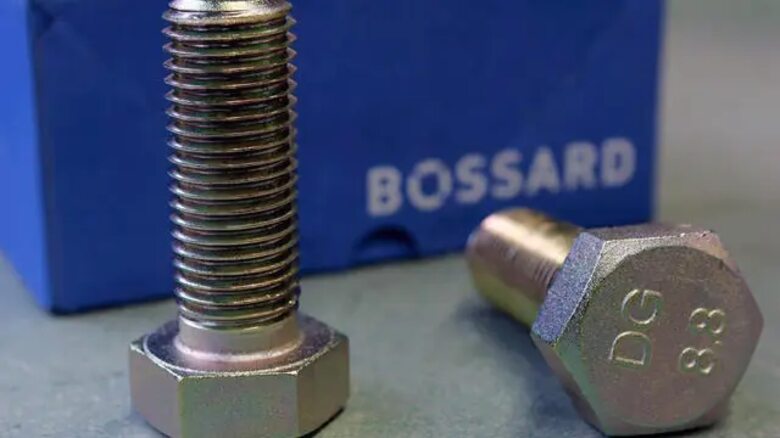In the construction and building industries, bolts are critical components that hold structures together, ensuring integrity and safety. However, one often-overlooked threat that can compromise the reliability of these fasteners is hydrogen embrittlement. This phenomenon can cause sudden and unexpected bolt failure, leading to costly repairs, downtime, or even structural collapse. Understanding the impact of hydrogen embrittlement on bolts/ baut is essential for engineers, contractors, and project managers focused on safety and long-term durability.
What is Hydrogen Embrittlement?
Hydrogen embrittlement is a process where hydrogen atoms infiltrate a metal, particularly high-strength steel, leading to a significant reduction in ductility and load-bearing capacity. This condition can result in cracking and sudden failure of the metal, even under loads far below its designed capacity.
In bolts, hydrogen embrittlement typically occurs when hydrogen is introduced during manufacturing processes such as electroplating, acid cleaning, or pickling. Hydrogen can also enter during service life if bolts are exposed to corrosive environments, particularly those containing water and chemicals.
How Hydrogen Embrittlement Affects Bolts in Construction
For construction and building applications, bolts are often subjected to significant stress and environmental exposure. Hydrogen embrittlement on bolts becomes a serious concern in scenarios involving:
High-strength bolts (above Grade 8.8 or ASTM A490)
Zinc electroplated or cadmium-coated fasteners
Exposure to moisture, corrosive chemicals, or aggressive environments
Tensioned bolts under sustained loads
The infiltration of hydrogen atoms into bolt material leads to microscopic cracks that grow under stress. Over time, these cracks propagate, ultimately causing the bolt to snap without warning—a failure known as brittle fracture.
Such failures can have serious consequences in structural applications, including steel frameworks, bridges, facades, and mechanical assemblies in buildings. The financial and safety risks highlight why understanding hydrogen embrittlement is vital for any construction professional.
Common Sources of Hydrogen Introduction in Bolts
Hydrogen embrittlement is primarily influenced by the way bolts are manufactured, handled, and used. The most common sources of hydrogen introduction include:
Electroplating Processes: Zinc or cadmium electroplating is widely used for corrosion protection but is a major source of hydrogen absorption if not properly managed.
Pickling and Acid Cleaning: Surface treatments involving acids can release hydrogen atoms that migrate into the steel.
Environmental Corrosion: In service, bolts exposed to wet and corrosive conditions may generate hydrogen due to chemical reactions.
Improper Heat Treatment: Residual stresses from quenching or cold working can increase susceptibility to embrittlement.
Understanding these sources is crucial when selecting and specifying bolts for construction projects.
Practical Strategies to Prevent Hydrogen Embrittlement on Bolts
Fortunately, several best practices can help reduce the risk of hydrogen embrittlement and ensure the reliability of bolts used in building and construction:
1. Material Selection:
Choose bolts with appropriate strength levels. Lower-strength bolts (below Grade 8.8) are less susceptible to hydrogen embrittlement.
2. Controlled Coating Processes:
Use mechanical plating or hot-dip galvanizing instead of electroplating for corrosion resistance. If electroplating is necessary, opt for processes that minimize hydrogen generation and include post-bake treatments.
3. Hydrogen Relief Baking:
For high-strength, electroplated bolts, immediate baking after plating (typically at 200°C for several hours) can drive out absorbed hydrogen and mitigate embrittlement risks.
4. Avoid Over-tightening:
Applying excessive torque increases internal stresses, making bolts more vulnerable to cracking. Follow manufacturer recommendations for tightening and pre-load settings.
5. Environmental Protection:
Use protective sealants or design shielding to reduce bolt exposure to moisture and corrosive agents on-site.
6. Inspection and Maintenance:
Regular inspection of bolts in critical areas helps detect early signs of embrittlement, such as surface cracking or changes in appearance.
Product Considerations: Choosing the Right Bolts for the Job
Leading fastener manufacturers offer products designed to resist hydrogen embrittlement, such as pre-treated, baked, or mechanically coated bolts. When sourcing bolts for your construction project, always inquire about:
– Embrittlement-resistant coatings
– Manufacturer’s post-plating baking procedures
– Certifications for high-stress or corrosive environments
Choosing the right bolt can make a significant difference in long-term performance and safety.
Conclusion
Hydrogen embrittlement on bolts poses a serious risk in construction and building applications, especially where high-strength fasteners and harsh environments are involved. By understanding the causes, effects, and prevention strategies, construction professionals can make informed decisions to protect their projects from costly and dangerous bolt failures.
Investing in quality bolts with proper coatings and treatments, combined with mindful installation practices, will go a long way in ensuring structural integrity and safety on any job site: tokohasil.

